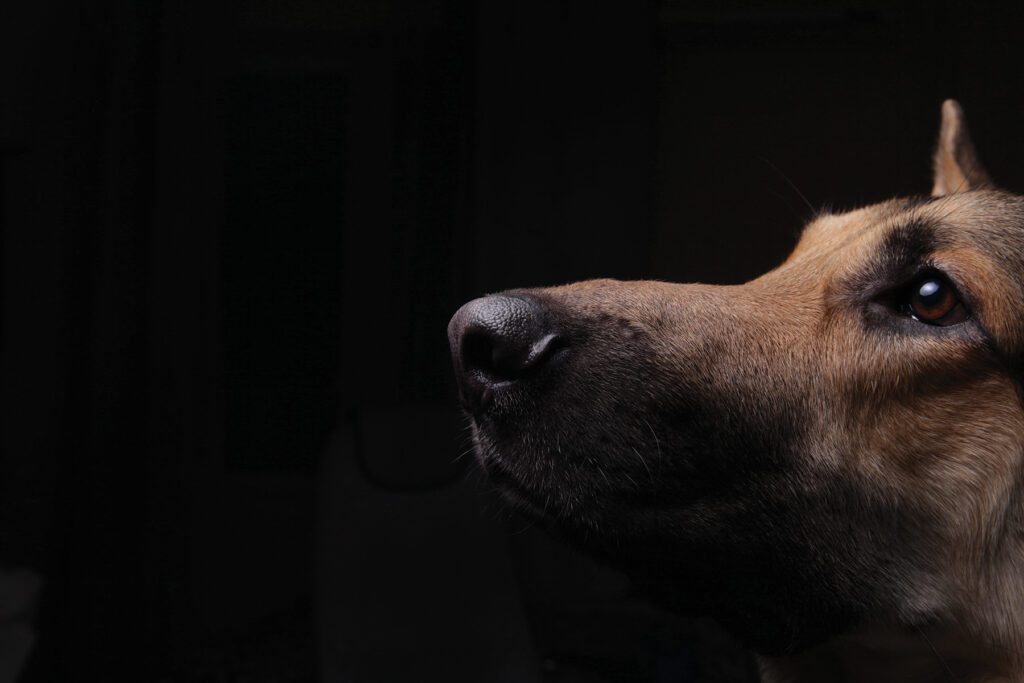Citrus Industry Enlists Help of Dogs Trained to Detect Greening
Anyone with a four-legged friend of the canine kind knows that it’s nearly impossible to hide anything from a dog’s sense of smell.
In fact, their olfactory senses are approximately 1,000 times stronger than those of a human. With the proper training, our canine friends are able to detect everything from bombs to drugs to illnesses such as cancer. But their illness detection skills are not limited to humans; canines are also capable of being trained to detect the presence of agricultural diseases, including the most destructive one that has been causing declines in Florida’s Citrus industry for more than 15 years: HLB (Huanglongbing) or citrus greening.
HLB has caused an estimated 75% decline in citrus production in Florida since its emergence. Unfortunately, HLB also recently been detected in California and Texas citrus, which means there is an even greater urgent need for the discovery of efficient methods to combat the disease.
Canine scent detection provides a new tool to assist in the early detection of HLB. With grants from the USDA, it is possible that the agricultural detection dogs can be deployed early enough to detect the presence of the disease and enable growers to minimize the damage in their groves and stop the spread of greening to other areas. Some local canine training schools are adapting programs for agricultural disease detection training. One of these schools is F1K9, which holds canine training programs for agricultural disease detection and provides many other canine detection services.
Dr. Tim Gottwald of the USDA-ARS started developing the idea of agricultural detector dogs more than 20 years ago, in 1998. Researchers at F1K9 still collaborate with Dr. Gottwald to this day. In fact, they have developed two canine agricultural detection training programs: one for HLB and one for PPV or Plum Pox Virus, which is a viral disease found in stone fruits such as plums, peaches, nectarines, sweet and tart cherries.
William Schneider, chief research scientist at F1K9, explains that all their dogs are specifically bred for scent detection and are usually of the German shepherd or Belgian Malinois breed. Dogs with nice long noses and high scent drives are ideal breeds for scent detection training. The very first agricultural disease detection canine at F1K9 was actually a black lab named Juice who was trained to detect citrus canker.
Canines being trained for agricultural disease detection need to have some sort of certification that indicates they are specially qualified to detect the presence of agricultural diseases, much like they would need to be certified to be a drug or bomb detection dog.
Schneider explains, “It’s extremely important to have some type of certification so growers can trust the results. When we started transitioning the canines from a research and development project into a commercial product, we wanted to make sure that there was some level of quality assurance.” , just like there is for conventional detector canines. But the idea of agricultural detector canines was just too new, so nothing like that existed.”
Researchers needed to develop some guidelines and started an organization called Continental Certification Association for Agricultural Detector Dogs (CCADD), an organization that tests canine/handler teams (canines and handlers are always certified as teams for detection work) and certifies that they are 95% accurate at detecting HLB, and that their level of repeatability is consistently high.
But what exactly are the dogs detecting with their super sensitive noses when they alert to their trainer? Schneider explains that initially, they thought the canines were “detecting volatiles that the infected trees were emitting in response to infection.”
“That was the simplest and most likely explanation,” he says. “But as we did more experiments, it became clear that the canines detect HLB in every possible host, including things like tobacco and dodder. In addition, the canines can detect HLB in psyllids. Now there’s no way that all these very different species emit the same volatiles, so we did one last test using a co-culture and discovered that the canines are actually directly detecting the CLas bacteria.”
The way in which scent detection works with canines is a fairly simple behavioral reward system. The canines are rewarded when they alert the trainer to the target scent. Once the canine alerts the trainer to the presence of the target scent with a particular behavior, such as sitting, they are rewarded.
Currently, the commercial application of agricultural disease detection canines has been mostly private growers and businesses. However, the market for agricultural disease detection canines could expand very rapidly over the next several years, as research continues and we learn more about dogs’ capabilities for early disease detection. New training programs are currently being developed at F1K9 and other schools in Florida.
Bill Turechek and Scott Adkins of the USDA-ARS have collaborated with the trainers at F1K9 to work on training detector canines to identify five different viruses of squash and tomatoes, for example. Just like in humans, early disease detection is tremendously valuable when it comes to preventing the further spread, and canines may be our most useful tool yet in fighting the spread of HLB.

